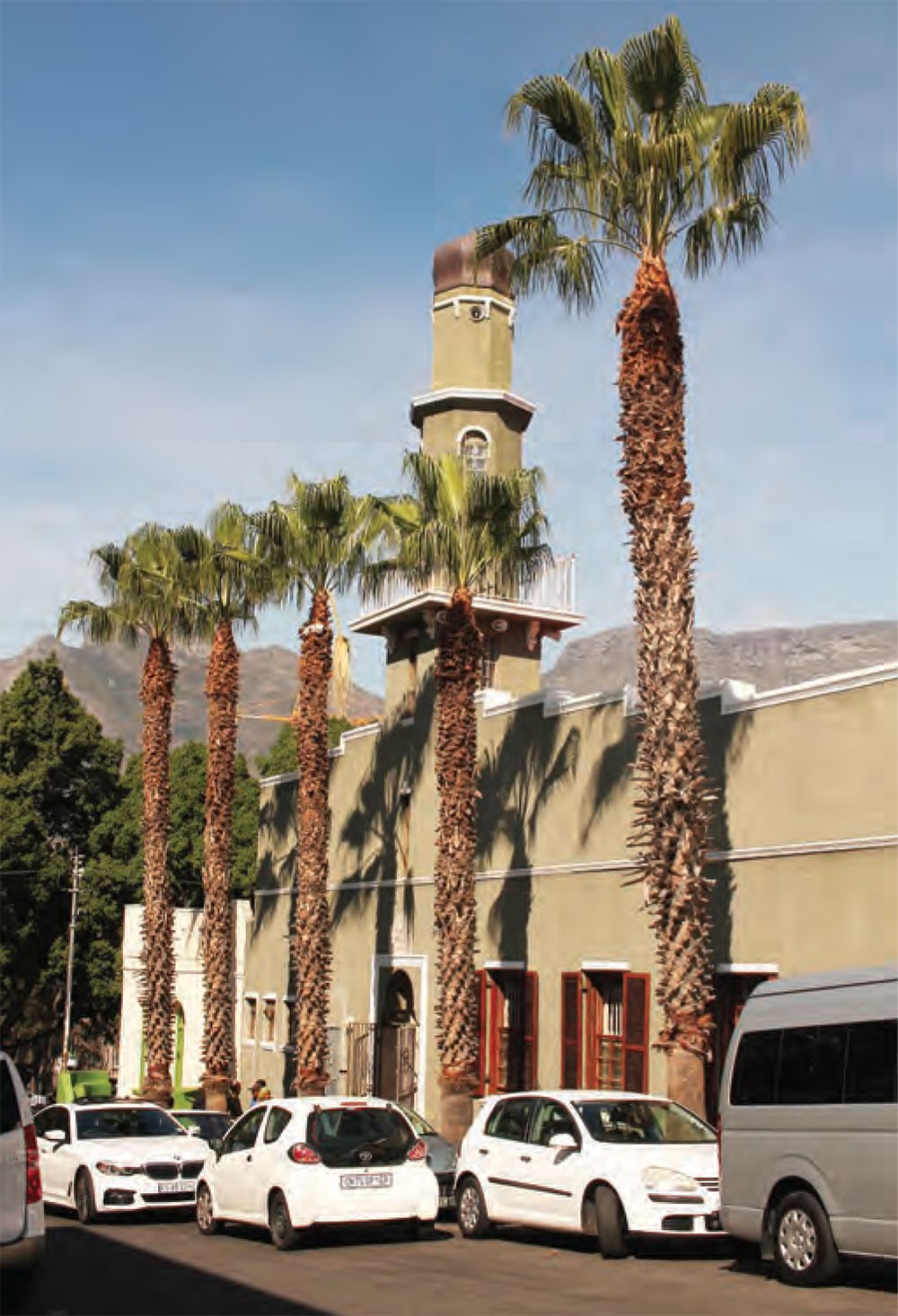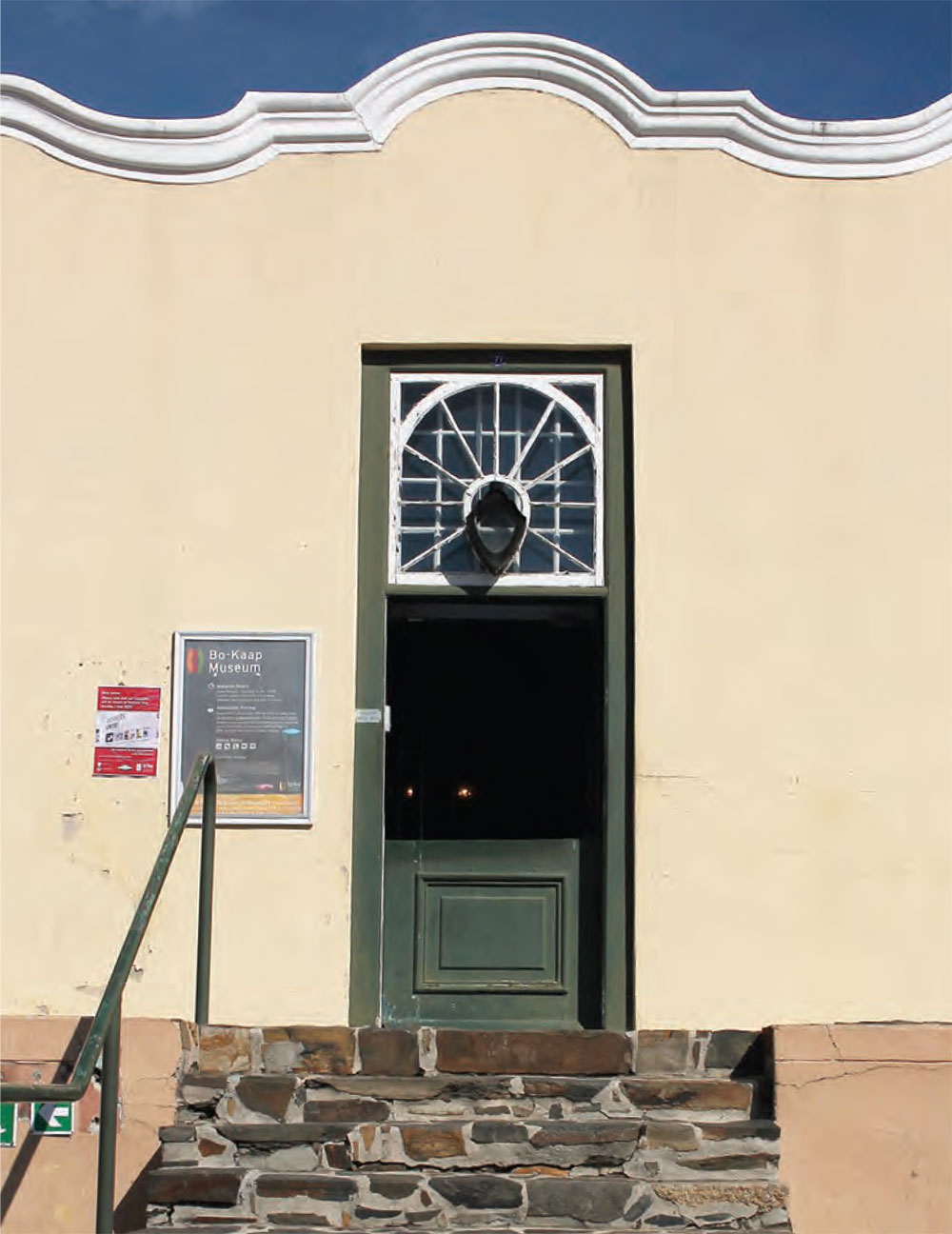Advertisement
With records of its initial development dating back to the 1760s, the Bo Kaap is among Cape Town’s — and South Africa’s — oldest residential areas.
One of the first houses built in the area during this initial wave by architect Jan de Waal still stands as the Bo Kaap Museum on modern-day Wale Street, echoing the area’s original name of Waalendorp. It’s a rare glimpse of the prevailing urban design inclinations some 250 years ago.
The first mosque in the Cape was built here in 1794 (still in use today despite numerous alterations), a spiritual bastion for the thousands of slaves, political exiles and convicts from East Africa and South East Asia arriving on these shores from the mid-seventeenth century. Despite the diversity of this ethnic influx, the term ‘Cape Malay’ was broadly adopted to define these new arrivals, and Waalendorp became known colloquially as the Malay Quarter. Though Islam gradually emerged as the area’s dominant culture, the Bo Kaap has always been a multicultural melting pot in a thriving port city. Its current association as a Muslim neighbourhood is largely the result of regretful political engineering: the infamous Group Areas Act of 1950 declared the Bo Kaap to be solely for Cape Muslim residents, to the exclusion of all other religions and ethnicities.
This semi-isolation of the area has fostered an unusually consistent cultural identity in this nook between Buitengracht and Strand. Cape Malay cooking, defined by tomato bredie, bobotie, sosaties and koeksisters, is arguably the most coherent and definable cuisine in the country. The symphony of vivid hues that characterise the Bo Kaap’s residential façades is another byproduct of the area’s distinct spiritual fervour. The tradition of brightly painting one’s house as a preparation for Eid has slowly been phased out, but residents routinely re-paint their exterior walls in a new tradition of community pride, celebrating its uniqueness. It’s no wonder that this Crayola patchwork of lime, magenta, vermillion, zaffre, saffron, crimson and violet on the foot of Signal Hill rivals Table Mountain as the city’s definitive picture postcard.
Today the Bo Kaap remains peculiar in that it is one of very few neighbourhoods to emerge from Apartheid’s divisive mission with a predominantly working class population still adjoined to the city centre. Local politics aside, this phenomenon of affordable, quality housing on the CBD’s fringe is a rarity the world over.
Advertisement
It’s had many names over the years: Waalendorp, the Malay Quarter, the Slamse Buurt, Schotcheskloof. But despite shifting nomenclatures, the Bo Kaap has been a bright colourful jewel in the city’s crown for more than two centuries. As this beautiful neighbourhood bobs along in the wake of Cape Town’s rapid modernisation project, it’s crucial to reflect on the value of history, culture, and character in a city. They will always be the antidote to cold concrete sprawl, and we’d be wise to passionately preserve this finite resource.
Bo Kaap landmarks
Auwal Mosque
Oral tradition maintains that this is the oldest mosque in South Africa, built when Imam Abdullah Kadi Abdus Salaam (also known as Tuan Guru, a prince from Indonesia) arrived on these shores.

As the first Imam of the Cape, Tuan Guru is believed to have written several copies of the holy Quran from memory, thus playing a significant role in the growth of Islam in South Africa. According to records at the deeds office in Cape Town, the land on which this mosque is located is still registered in the name of his wife, Saartjie van de Kaap. This dates back to February 13 1809, but the mosque is believed to have been in use since 1794.
Bo-Op
Though perhaps too new to warrant landmark status, this unmissable building on Wale Street, with its Bo Kaap-meets-de Stijl façade, exemplifies the new wave of commerce in the area.
No less than ten local designers showcase and sell their work under one roof, including Ballo, Grandt Mason Originals, Sealand, Stockton Goods, and more. The adjoining Deluxe Coffee pod brews the best cup of coffee in the area. Conscious of the area’s culture and aesthetic, Bo-Op points the way to integrated modernisation, showing us that change needn’t be unsettling.
Bo-Kaap Kombuis
The Bo Kaap is the home of Cape Malay cuisine, and Bo Kaap Kombuis is one of the best exemplars of this traditional fare. The restaurant’s owners, Yusuf and Nazli Larney, pride themselves on refl ecting the customs and traditions of the area’s original residents.
Located in the hub of one the most tourist-frequented areas of the city, it’s fair to say that this humble establishment has introduced the distinctive fruity, spicy fl avours of Cape Malay cooking to tastebuds from all corners of the globe.
Rocksole
This men’s shoe store has been a Cape Town landmark since 1936, soon after a young cobbler from Bombay came to the Cape in search of opportunity.
For the better part of a century, this fourth-generation family business has clad the feet of the city’s most discerning gentlemen, its reputation bolstered by the type of old-world customer service one rarely fi nds today. For classic leather brogues and meticulous repairs, Rocksole is the fi rst place to go.
Atlas Trading
In 1946, two brothers bought a small general dealer store on Wale Street in the heart of the Bo Kaap, at a time when it was generally accepted that for good spices, you had to go to Durban.
Soon the shop became known throughout the city, and some sixty years later it retains a sterling reputation for the quality and variety of their imported spices. Wahab Ahmed now manages the store with his brother and two cousins, recently relocated a stone’s throw from the original store but replete with all its ongoing fi ttings. Described by some as a “spice sommelier,” Wahab’s reverence for turmeric, saffron, basmati, cardamom and masala will no doubt inspire you to cook up a pungent curry for dinner.
The Noon Gun
There’s arguably no tradition more ingrained in the psyches of all Capetonians than the unwavering noontime ‘BOOM’ from Signal Hill.
After the English occupation of the Cape in 1795, Dutch guns were taken and replaced by a bigger English cannon, and ever since 1806, a shot has been fired by the South African Navy as a time signal. The public is able to visit the site to watch the process of shooting the gun and learn about its history. While you’re up there, the views of the city are quite superb.
Bo Kaap Museum
Built between 1763 and 1768, this historical home is the last remnant of Waalendorp, an early residence in what would become the Bo Kaap
area.

In light of the area being home to many Muslims and freed slaves after the abolition of slavery, the Bo Kaap Museum showcases local Islamic culture and heritage. In order to depict the lifestyle of a traditional 19th-century Muslim family residing in Bo Kaap, the museum is set up and furnished as if it is a family’s home.



Good day to you.
Please send me more information of available options to buy/ rent and pricing.